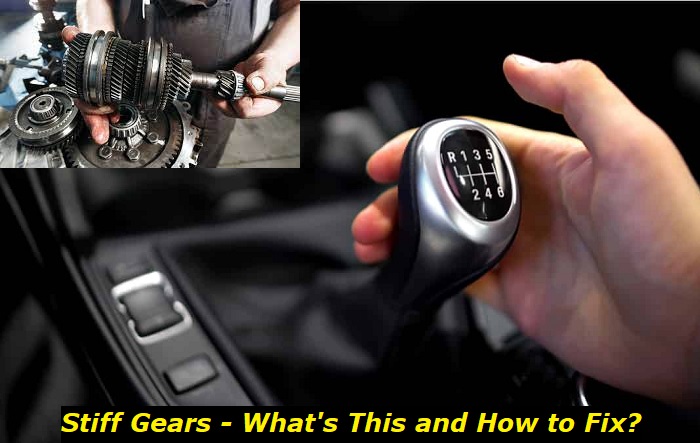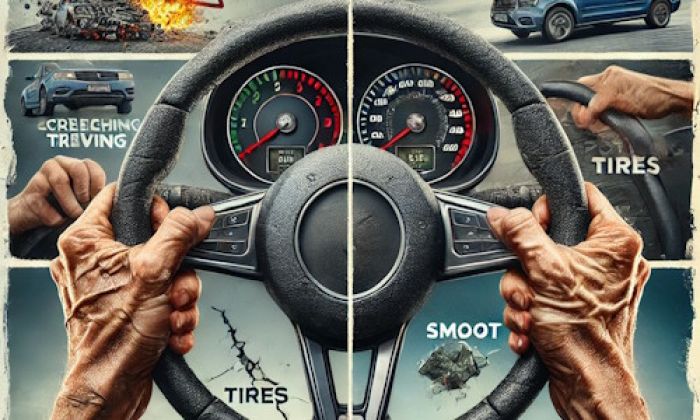If your vehicle has a manual transmission, your gears may feel stiff. This is a very common problem with these types of transmissions. Also, owners of automatic cars often claim they have this issue but we fairly can't imagine how they feel that their gears are stiff if they actually don't change them manually.
Manual transmission problems highlights
- Level of importance:High
- Prevention:Maintenance, careful driving
- Needed expertise:High
- Needed tools:Professional auto repair tools
- Time taken:5-10 hours
- Possible issues:Gear shifting problems, noisy work of bearings, clutch problems, shifter issues, shifting system problems.

"Stiff gears" in automatic transmissions - what's this?
Although we are asked about "stiff gears in automatic transmissions" now and then, we fairly don't understand what this problem is and how we can classify its symptoms. All people write about their own range of symptoms and they are different in all cases. What's more, in every case, they come up with a different explanation of what they understand under stiff gears.
So, we have some common remedies for this problem in automatic transmissions:
- change the fluid in your transmission to make sure it's not contaminated or low;
- if this doesn't help, have the transmission thoroughly inspected in the dealership or repair shop;
- also, don't forget that the shifter may be in charge of some stiffness when turning between modes;
- check if the transmission doesn't have any fault codes and errors (use the scanner for this).
If nothing helps, there is a possibility that the transmission is going to die soon. This means that you have two choices: you can repair the transmission or replace it with a new one. In some cases, when the car is old and its residual value is very low, it's really better to get rid of the vehicle while it still can move by itself.
"Stiff gears" in manual transmission - what's this?
Manual transmissions are much more often claimed to have stiff gears. This means the gear is quite hard to turn on. It's also usually hard to shift between different gears and this makes your driving unusually complicated. You will need to pay attention to changing gears and less attention to the road which is dangerous.
The stiffness of gears is usually described as a major problem that disturbs you from driving and should be addressed immediately because it makes your driving dangerous. Some drivers still manage to put up with the problem and keep driving their cars like this. But this is obviously not the best idea.
Here are some reasons for stiff gears in manual transmissions:
- the transmission itself needs repair because of mechanical issues, usually when the mileage is quite high;
- the shifting mechanism that is usually mounted outside the transmission, is worn out and needs repair or replacement;
- the stick shift mechanism is broken or worn out and needs the attention of a professional mechanic;
- the transmission mount is damaged and the transmission is placed wrongly in the engine bay which causes shifting difficulties;
- the clutch is bad and needs replacement which is, thank goodness, not as expensive as repairing or replacing clutches in DCT units.
We won't dive into the technical details of these transmissions because you aren't likely to volunteer to repair them by yourself. You may check the stick shift, the shifting mechanism, and also the transmission mount if you have the experience and the proper tools for this. In all other cases, you will let someone else do this job.
Manual transmissions are usually much more durable than automatic ones and are much cheaper to repair. They may need clutch replacement from time to time and may also show some minor issues with stick shifts and shifting mechanisms. Other than that, they can live over 300,000 miles with no major repairs.
How can you fix the stiff gears in your transmission?
Fixing the transmission in this case may not be as expensive as you may think. We would start checking the transmission from the cheapest parts and then would move on to more expensive and complicated units. We don't recommend any DIY inspections because they may end up with some extra damage to the parts of your vehicle. Do something by yourself in that case only if you really have experience and the proper tools for this.
Repairs should be conducted by professionals and with the use of high-quality parts. You may find aftermarket parts from different brands on the market, but we recommend OEM ones. Aftermarket parts are OK when you are replacing the clutch.
Here's how the repair will be conducted in this case:
- Locate the issue. The first and most important step is to locate the unit that is to blame for the stiffness of your gears.
- Decide how you can take the faulty unit off the vehicle. If you have enough experience, you can do it by yourself. But most drivers will want to have this job done by professionals.
- Buy the new part. Choose OEM parts if they are available. Although aftermarket parts cost you less money, they will also work shorter time and may get faulty pretty soon.
- Install the new part. Again, this should be done by professionals to avoid any mistakes in the process.
- Test the unit. The best thing you can do after installing everything back on your car is to test the transmission and see if it's OK now.
- Check if everything is fastened properly. For fastening transmission units, you may need to use a torque wrench and apply certain power.
Your transmission is an important part of the vehicle's powertrain. If it's repaired incorrectly, you may get into trouble. So, the best strategy is to allow a professional mechanic to take care of your transmission if something is wrong with it.
Manual transmissions are way easier to repair and maintain, so you shouldn't get any problems with them. But sometimes, these transmissions just fall apart and it's cheaper to buy a new one. Also, you should understand that manual transmissions are not as expensive to buy as automatic ones. You can buy them new or used depending on your vehicle model and on the budget that you have for repair.
What are other signs of transmission death?
Quite often the death of the manual transmission starts with stiff gears. The problem develops gradually over a long time and eventually, the transmission becomes just unbearable to operate. But sometimes the changes are so unnoticeable that you don't feel any changes at all. So, you may want to know some other signs that show the possible death of your manual transmission.
Here they are:
- grinding noises when engaging gears or when driving - they are sometimes connected to the transmission and need proper attention;
- you just can't engage a certain gear or a couple of gears - this means the transmission needs urgent repair;
- whining noise when driving - very often it comes from the transmission and means that one of its bearings is done;
- the car revs up when in gear and you press the gas pedal sharply - this means the clutch is dead and needs replacement;
- the stick shift falls out of gear when you drive - this may be with one certain gear or with all gears in the transmission.
These are the most common symptoms that tell you about the problems with your transmission. They may come along with stiff gears or separately. The more symptoms you can find in your vehicle showing up at once, the more chances you have to deal exactly with transmission problems.
But keep in mind that these symptoms may also relate to other units in your vehicle. The suspension, engine, steering system, and other parts may show exactly the same symptoms in different combinations.
Final thoughts
Well, manual transmissions are not so often seen in cars in the US. But they are great in terms of how practical and bulletproof they are. Also, you get total control over your vehicle if it's equipped with a manual transmission. You can easily control how you drive - to save up some fuel or to get sporty emotions.
But we can't say that manual transmissions are completely problem-free. You can feel that your gears are becoming stiffer than usual and this may attract some new signs of transmission problems. If this is the case, just have the transmission inspected and repaired till it's not too late. Otherwise, after some time of driving, you will have to replace the damaged transmission.
About the authors
The CarAraC research team is composed of seasoned auto mechanics and automotive industry professionals, including individuals with advanced degrees and certifications in their field. Our team members boast prestigious credentials, reflecting their extensive knowledge and skills. These qualifications include: IMI: Institute of the Motor Industry, ASE-Certified Master Automobile Technicians; Coventry University, Graduate of MA in Automotive Journalism; Politecnico di Torino, Italy, MS Automotive Engineering; Ss. Cyril and Methodius University in Skopje, Mechanical University in Skopje; TOC Automotive College; DHA Suffa University, Department of Mechanical Engineering






Add comment